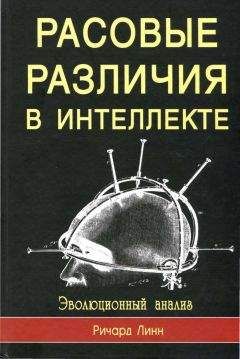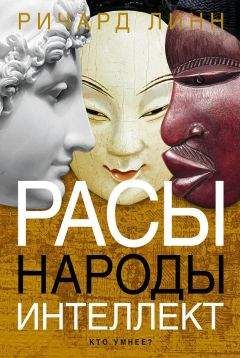Stevenson, H. W., Stigler, J. W., Lee, S., Lucker, G. W. Kitanawa, S. and Hsu, C. (1985). Cognitive performance and academic achievement of Japanese, Chinese and American children. Child Development, 56, 718-734.
Stewart, L. H., Dole, A. A., and Harris, Y. Y. (1967). Cultural differences in abilities during high school. American Educational Research Journal, 4, 19-30.
Stewart, R., Johnson, J., Richards, М., Brayne, C., and Mann, A. (2002). The distribution of Mini-Mental State Examination scores in an older UK African-Caribbean population compared to MRC CFA study norms. International Journal of Geriatric Psychiatry, 17, 745-751.
St. George, A. (1974). Cross-cultural ability testing. Unpublished.
St. George, R. (1970). The psycholinguistic abilities of children from different ethnic backgrounds. Australian Journal of Psychology, 22, 85-89.
St. George, R. (1983). Some psychometric properties of the Queensland Test of Cognitive Abilities with New Zealand, European and Maori children. New Zealand Journal of Psychology. 12, 57-68.
St. George, R., and Chapman,J. W. (1983).TOSCA results from a New Zealand sample. New Zealand Journal of Educational Studies, 18, 178-183.
St. George, R., and St. George, S. (1975). The intellectual assessment of Maori and European children. In R D. K. Ramsay (Ed.). The Family at School in New Zealand. London: Pitman.
St. John, J.,Krichev, A., and Bauman, E. (1976). North Western Ontario Indian children and the WISC. Psychology in the Schools. 13, 407-411.
Storfer, M. D. (1990). Intelligence and Giftedness. Jossey-Bass, San Erancisco.
Strauss, M. A. (1954). Sub-cultural variation in Ceylonese mental ability: a study in national character. Journal of Social Psychology, 39, 129-141.
Stringer, С. B., and Andrews, R (1988). Genetic and fossil evidence for the origin of modem humans. Science, 239, 1263-1268.
Stringer, С. B., and McKie, R. (1996). African Exodus. London: Pimlico.
Strum, S. C. (1981) Processes and products of change: baboon predatory behavior at Gilgil, Kenya. In R. Harding and G. Telela (Eds.). Omnivorous Primates. New York, Columbia University Press.
Расовые различия в интеллекте
293
Sugishita, М., and Omura, К. (2001). Learning Chinese characters may improve visual memory. Perceptual and Motor Skills, 93, 579-594.
Sundberg, N., and Ballinger, T. (1968). Nepalese children’s cognitive development as revealed by drawings of man, woman and self. Child Development, 39, 969-985.
Sung, Y. H., and Dawis, R. V. (1981). Level and factor structure differences in selected abilities across race and sex groups. Journal of Applied Psychology, 66,613-624.
Symonds, P. M. (1924). The intelligence of Chinese in Hawaii. School and Society, 19, 442.
Takeuchi, М., and Scott, R. (1992). Cognitive profiles of Japanese and Canadian kindergarten and first grade children. Journal of Social Psychology, 132, 505-512.
Tamaoka, K., Saklofske, D. H., and Ide, M. (1993). The non-verbal reasoning ability of Japanese children measured by Naglieri’s matrix analogies test — short form. Psychologia, 36, 53-60.
Tan, U., Tan, М., Polat, P., Ceylan, Y, Suma, S., and Okur, A. (1999). Magnetic resonance imaging brain size/IQ relations in Turkish university students. Intelligence, 27, 83-92.
Tarnopol, L., and Tarnopol, M. (1980). Arithmetic ability in Chinese and Japanese children. Focus on Learning Problems in Mathematics, 2, 29-48.
Taschinski, R. (1985). Eine Untersuchung zur Kulturfaimws der Progressiven Matrizen von Raven gegeniiber tiirkischen Kindem in Deutschland. Psychologic in Erziehung und Unterricht, 32, 229-239.
Taylor, J. М., and Radford, E. J. (1986). Psychometric testing as an unfair labour practice. South African Journal of Psychology, 16, 79-86.
Taylor, L. J., and Skanes, G. R. (1976a). Level 1 and level 11 abilities in Inuit and white children from similar environments. Journal of Cross-Cultural Psychology, 7, 157-167.
Taylor, L. J., and Skanes, G. R. (1976b). Cognitive abilities of Inuit and white children from similar environments. Canadian Journal of Behavioral Science, 8, 1-8.
Taylor, L. J., and Skanes, G. R. (1977). A cross-cultural examination of some of Jensen’s hypotheses. Canadian Journal of Behavioral Science, 9, 315-322.
Teasdale, G. R., and Katz, F. M. (1968). Psycholinguistic abilities of children from different ethnic and socio-economic backgrounds. Australian Journal of Psychology, 20, 133-159.
Teasdale, T. W., and Owen, D. R. (1994). Thirty year secular trend in the cognitive abilities of Danish male school leavers at a high educational level. Scandinavian Journal of Psychology, 35, 328-335.
Teasdale, T. W., and Owen, D. R. (2000). Forty-year secular trends in cognitive abilities. Intelligence, 28, 115-120.
Teeter, A., Moore, C., and Petersen, J. (1982). WISC-R verbal and performance abilities of Native American students referred for school learning problems. Psychology in the Schools, 19, 39-44.
Telford, C. W. (1932). Test performance of full and mixed-blood North Dakota Indians. Journal of Comparative Psychology, 14, 123-145.
Templer, D. I., and Arikawa, H. (2005). Temperature, skin color, per capita income and IQ: an international perspective. Intelligence (to appear).
Te Nijenhuis, J. (1997). Comparability of Test Scores for Immigrants and Majority Group Members in the Netherlands. Enschede, the Netherlands: Ipskamp.
Te Nijenhuis, J., Tolboom, E. A., Resing, W. C., and Bleichrodt, N. (2004). Does cultural background influence the intellectual performance of children of immigrant groups? European Journal of Psychological Assessment, 20, 10-26.
Te Nijenhuis,J., and van der Flier, H. (2001). Group differences in mean intelligence for the Dutch and third world immigrants. Journal of Biosocial Science, 33, 469-475.
Terman, L. M. (1916). The Measurement of Intelligence. Boston, MA: Houghton Mifflin.
Tesi, G., and Young, В. H. (1962). A standardisation of Raven’s Progressive Matrices. Archive de Psicologia Neurologia e Psichologia, 5, 455-464.
Tesser, P. Т. М., Merens, J. G., and van Prag, C. (1999). Rapportage minder heden 1999. Rijswijk: Social en Cultured Planburewau.
294
Ричард Линн
Themstrom, A., and Thernstrom, S. (2003). No Excuses: Closing the Racial Gap in Learning. New York: Simon and Schuster.
Thomas, N. W. (1925). Australia: its native races and their customs. In: J. A. Hammerton (Ed.). Peoples of All Nations. London: Amalgamated Press.
Thomas, R. М., and Shah, A. (1961). The Draw-a-Man Test in Indonesia. Journal of Educational Psychology, 32, 232-235.
Thompson, P. М., Cannon, T. D., Narr, K. L., van Erp, T, and Poutanen, V-P. (2001). Genetic influences on brain structure. Nature Neuroscience, 4, 1253-1258.
Thorndike, R. L., Hagen, E. P., and Sattler, J. M. (1986). Stanford-Binet Intelligence Scale: Fourth Edition Manual. Chicago: Riverside.
Thurstone, L. L. (1938). Primary Mental Abilities. Chicago: University of Chicago Press.
Tizard, B. (1972). IQ and race. Nature, 247, 316.
Tobias, P. V. (1970). Brain-size, grey matter and race — fact or fiction? American Journal of Physical Anthropology, 32, 3-26.
Tooby,J., and Devore, I. (1989). The reconstruction of hominid behavioral evolution through strategic modelling. In W. G. Kinzey (Ed.). The Evolution of Human Behavior: Primate Models. Albany, NY: State University of New York Press.
Torrence, R. (1983). Time budgeting and hunter-gatherer technology. In G. Bailey (Ed.). Hunter-Gatherer Economy in Prehistory: A European Perspective. Cambridge, Cambridge University Press.
Turner, G. H., and Penfold, D. J. (1952). The scholastic aptitude the Indian children of the Caradoc reserve. Canadian Journal of Psychology, 6, 31-44.
Tzriel, D., and Caspi, N. (1992). Cognitive modifiability and cognitive performance of deaf and hearing preschool children. Journal of Special Education, 26, 235-252.
Ucman, P. (1972). A normative study of the Goodenough-Harris test on a Turkish sample. In L. J. Cronbach and P. J. D. Drenth (Eds.). Mental Tests and Cultural Adaptation. The Hague: Mouton.
UNICEF. (1996). The State of the World’s Children. Oxford, U. K.: Oxford University Press.
United States Bureau of the Census. (1989). The Hispanic population of the United States. Current Population Reports, series P-20, No. 444.
United States Department of Health, Education and Welfare. (1970). Intellectual Maturity of Children. Washington, D.C.
United States Department of Health, Education and Welfare. (1971). Intellectual Development of Children. Washington, D.C.
United States National Aeronautics and Space Administration. (1978). Anthropometric Source Book, vol. 2, Handbook of Anthropometric Data. Washington, D.C.
Valencia, R. R. (1979). Comparison of performance of Chicano and Anglo-Saxon third grade boys on Raven’s Colored Progressive Matrices. Psychology in the Schools, 16, 448-453.
Valentine, M. (1959). Psychometric testing in Iran. Journal of Mental Science, 105, 93-107.
Van de Vijver, F. J. R., and Willemse, G. R. (1991). Are reaction time tasks better suited for cultural minorities than paper and pencil tests? In N. Bleichrodt and P. J. D.
Drenth (Eds.). Contemporary Issues in Cross-Cultural Psychology. Amsterdam: Swets and Zeitlinger.
Vandenburg, S.G. (1962).The hereditary abilities study: hereditary components in a psychological test battery. American Journal of Human Genetics, 14, 220-237.
Vejleskov, H. (1968). An analysis of Raven Matrix responses in fifth grade children. Scandinavian Journal of Psychology, 9, 177-186.
Verhagen, P. (1956). Utilite actuelle des tests pour l»etude psychologique des autochtones Congolais. Revue de Psychologie Appliquee, 6, 139-151.
Verive, J. М., and McDaniel, M. A. (1996). Short-term memory tests in personnel selection: low adverse impact and high validity. Intelligence, 23, 15-32.
Vernon, P. A. (1989). The heritability of measures of speed of informa-tion-processing. Personality and Individual Differences, 10, 573-576.
Расовые различия в интеллекте
295
Vernon, P. A., Wickett, J. С., Bazana, P. G., and Stelmack, R. М. (2000). The





